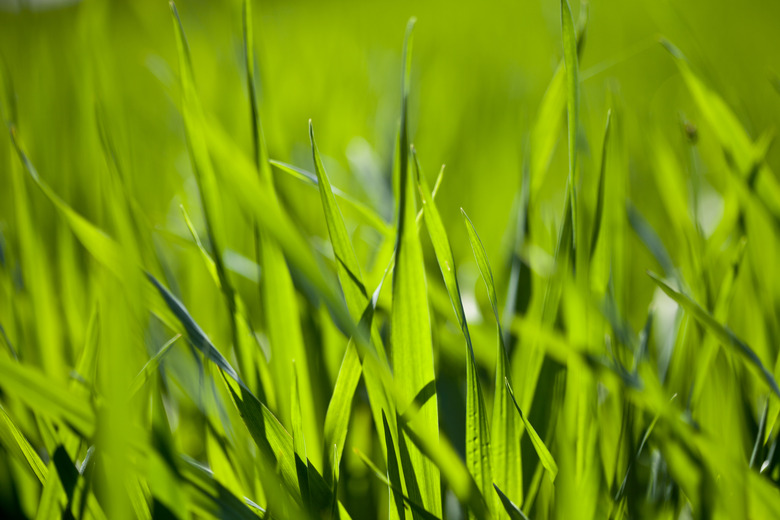How Much Oxygen Does Grass Make?
Grass produces the oxygen we breath through a complex process called photosynthesis. Photosynthesis occurs in every type of plant. The amount of oxygen produced varies depending on how much "green" the plant has. One of the best oxygen producers does not even live on land.
Function
Function
Plants and certain bacteria produce oxygen with sunlight through photosynthesis. Plants absorb light through the pigment chlorophyll, which then sends that energy into the storage parts in the plant. Carbon dioxide, readily available in our atmosphere, is taken in through small openings called stomata. The result of the mix between carbon dioxide, water and sunlight is sugar and oxygen.
Net Oxygen
Net Oxygen
According to Anthony Brach, the actual weighed amount of oxygen that grass produces does not matter as much as the net amount of oxygen produced in its life cycle. Grass does not produce much net oxygen because of the type of carbon it produces. When grass dies, its carbon products—sugars and starches—use up oxygen and release carbon dioxide when it decays. If an animal eats the grass, oxygen is used by the cow's digestive process to turn the grass into energy. Thus, grass is a poor producer of oxygen.
Surface Area
Surface Area
According to Jim Tokuhisa, there is no set amount for how much oxygen any single blade of grass produces. How much oxygen a plant produces depends on the amount of surface area that its blades cover. The more stomata a blade of grass contains, the more carbon dioxide and sunlight it takes in, and the greater the amount of oxygen is produced.
Placement
Placement
Where grass is located also affects how much oxygen it produces. Grass does not do very well in forests because of the canopy that prevents most sunlight from reaching the floor of the forest. According to University of Michigan's Global Change website, one square meter of grassland produces an average of 2,400 kilo-calories of energy per year. This is about smack in the middle for all types of land.
Better Sources
Better Sources
While most people learn in school that oxygen comes from plants in the ground, this is only half true. About half of the world's oxygen comes from phytoplankton, one-celled plants that live in the ocean. More important than producing oxygen, phytoplankton soak up carbon dioxide through photosynthesis. The process allows life in the oceans. Without these little plants we might not have an ecosystem.
Cite This Article
MLA
Huebsch, Russell. "How Much Oxygen Does Grass Make?" sciencing.com, https://www.sciencing.com/how-much-oxygen-does-grass-make-12222682/. 22 November 2019.
APA
Huebsch, Russell. (2019, November 22). How Much Oxygen Does Grass Make?. sciencing.com. Retrieved from https://www.sciencing.com/how-much-oxygen-does-grass-make-12222682/
Chicago
Huebsch, Russell. How Much Oxygen Does Grass Make? last modified March 24, 2022. https://www.sciencing.com/how-much-oxygen-does-grass-make-12222682/
